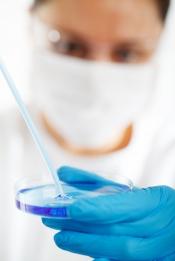Four steps to rebuild trust in biology
By Filipo Lentzos & Nicholas Evans,
The Guardian
| 05. 23. 2016
18-months of deliberation on how to regulate research enhancing the transmissibility and virulence of viruses will end when the National Science Advisory Board for Biosecurity (NSABB) meets on 24 May 2016. The modified pathogens created through so-called ‘gain-of-function’ experiments could, if accidentally released from labs or deliberately misused, cause man-made pandemics. A new regulatory framework for gain-of-function research could set a significant precedent by creating a new standard for oversight in the life sciences.
Scientists and innovators assure us that biological technologies will ultimately be beneficial, but trust in biologists is currently in a precarious state. Last week it was revealed that a handful of labs operated by the Centers for Disease Control and Prevention (CDC) faced serious and repeated sanctions, and even secretly had their permits suspended for serious safety violations while working with bioterror pathogens. The CDC’s lab operations have been under scrutiny since 2014, after a series of safety incidents at the agency’s headquarters in Atlanta involving Ebola, anthrax and a deadly strain of bird flu. At the National Institutes of Health (NIH), 30-year old live smallpox...
Related Articles
By Russ Burlingame, Comicbook | 07.23.2024
Colossal Laboratories and Biosciences, a biotech company that's putting together plans to orchestrate the de-extinction for animals like the dodo and the wooly mammoth, made some waves on Reddit recently when they petitioned the United Federation of Planets -- the...
By Andrea Chang, Los Angeles Times | 06.04.2024
Peter Diamandis, a week away from turning 63, bounds out of a Starbucks on a recent morning with a cup of decaf, his daily medley of 70 supplement capsules in his pocket and, tucked under his left arm, a box...
By Shelly Fan, Singularity Hub | 05.31.2024
We all know the drill for reproduction—sperm meets egg.
For the past decade, scientists have been pushing the boundaries of where the two halves come from. Thanks to induced pluripotent stem cell technology, it’s now possible to scrape skin cells...
By Vardit Ravitsky and Louise King, Scientific American | 06.01.2024
Artificial wombs are moving from the realm of science fiction to possible trials with severely premature human babies. We are excited about the great potential benefits of this technology; however, with fetal rights now a political front in the...




